MALI
History

History

History
Kingdom of Ghana and Islam
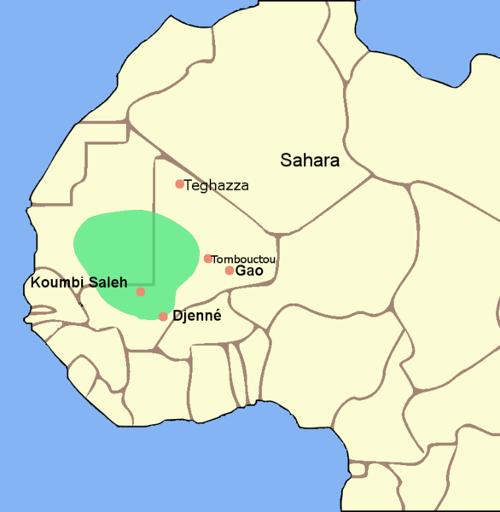 Map of the Kingdom of GhanaPhoto: Barada-nikto CC 4.0 International no changes made
Map of the Kingdom of GhanaPhoto: Barada-nikto CC 4.0 International no changes made
Between the 5th and 8th century, the kingdom of Ghana arose in West Africa, not to be confused with the modern state of Ghana. Present-day Southern Mauritania and Western Mali was the area of that kingdom founded by the Soninké. This population group still lives in this area. They were arable farmers and the rulers of this people made a lot of money from controlling the salt and gold trade in their area. In the 8th and 9th centuries, the Arabs interfered with the Sahara trade and founded important trading cities like Sijilmasa in southern Morocco. The Tuareg caused Islam to spread throughout the Sahel region.
The then capital of Ghana, Kumbi-Saleh, soon consisted of two parts, an Islamic part and a traditional African part. In the 11th century the social upper class of the Soninké turned to Islam. The common people remained loyal to traditional religions. The northern part of the empire was lost to the Almoravids. Initially, Ghana recovered from this, but the kingdom fell into decline in the 12th century as it lost its monopoly position.
New trade routes no longer ran through their territory, the climate became drier and arable farming was no longer possible due to overgrazing.
Kingdom of Mali
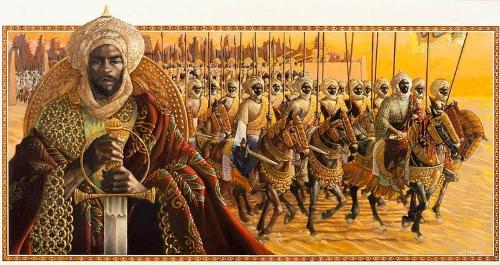 Mansa Musa, ruler of the kingdom of MaliPhoto: HistoryNmoor CC 4.0 International no changes made
Mansa Musa, ruler of the kingdom of MaliPhoto: HistoryNmoor CC 4.0 International no changes made
In the 13th century, the empire of Mali was founded, spread across present-day Senegal, southern Mauritania, northeastern Guinea and Mali, without the northern desert area. The empire was founded by Sundjata Keïta, who built the capital Niana on the Niger River. The good agricultural opportunities were fully exploited here. Rice, millet and sorghum were grown along the rivers Gambia and Niger. The gold trade was also important to Mali, because it was found on the upper reaches of the Niger, in the empire itself.
The most important peoples were the Soninké and the Malinké, the actual power was with the latter. Sundjata Keïta's successors were Muslims and the most famous was Mansa Musa. On his pilgrimage to Mecca he marketed so much gold on the way in Cairo that the world gold price collapsed. Mansa Musa was succeeded by his brother Mansa Sulayman, after which the empire quickly fell into disrepair with court intrigues and a series of weak kings. The empire was invaded by the Tuareg from the north and the Mossi from the south.
Kingdom of Songhai
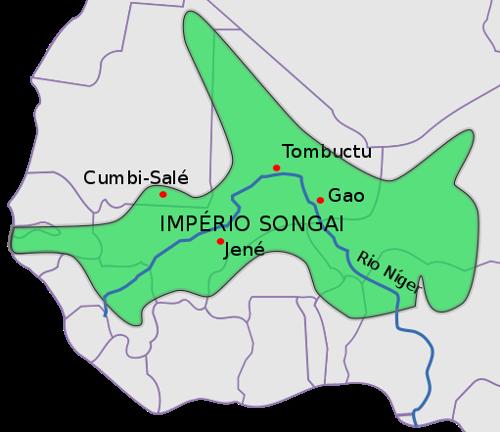 Kingdom of Sohghai, MaliPhoto: Roke CC 3.0 Unported no changes made
Kingdom of Sohghai, MaliPhoto: Roke CC 3.0 Unported no changes made
The third great kingdom in West Africa was Songhai. The Songhai lived south of Gao along the Niger. They traded food for salt and fabrics with Muslim merchants. It was therefore not surprising that all Songhai leaders had already converted to Islam in the 11th century. The original capital, Kukiya, was replaced by Gao, which was incorporated into the kingdom of Mali in the 14th century. Only the area south of Gao remained Songhai area. In the 15th century, Mali fell into disrepair and was overrun by King Sonni Sulayman Dandi and his successor Sonni Ali.
In 1468 Timbuktu (Toumbouctou) was conquered from the Tuareg and the salt mines of Taghaza, deep in the Sahara, also became part of the new empire. Under Muhammed Touré, a period of economic and cultural flourishing followed. The trade and control of the gold and salt trade and the proceeds from agriculture and fishing provided the economic boom. An example of cultural prosperity was the Sankoré mosque or university where tens of thousands of students studied Islam, medicine and law. The gold and salt trade across the Sahara was also controlled by Timbuktu.
Portuguese and the End of the Great Kingdoms
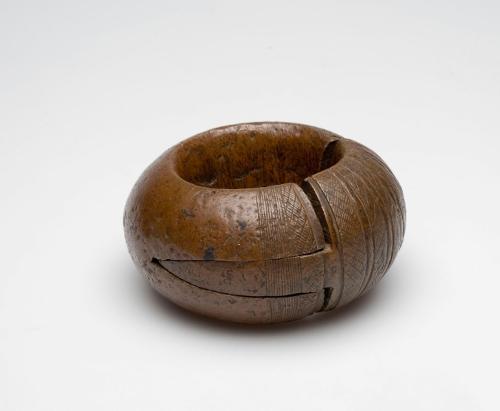 Jewelery Peul, MaliPhoto: Tropenmuseum CC 3.0 Unported no changes made
Jewelery Peul, MaliPhoto: Tropenmuseum CC 3.0 Unported no changes made
Competition from the Portuguese and empires in Central Africa over the gold trade started the Songhai's decline. The Portuguese built Fort Elmina in present-day Ghana and from there bypassed the middlemen, to which Songhai owed a large part of its prosperity. Songhai's army was also too small and too weak to stop especially the Moroccans led by Ahmed el Mansour. In 1591 the Songhai lost the battle of Tondibi.
This brought an end to the great kingdoms of West Africa. However, attention from Morocco diminished soon after El Mansour's death as a result of the guerilla war with the Songhai and the constantly invading nomadic peoples such as the Peul and the Tuareg. However, the Moroccans who stayed behind took matters into their own hands, married Songhai women and called themselves "Arma". In 1737 Timbuktu was conquered by the Tuareg and the rule of the Arma was over. Several empires arose along the Niger, of which Ségou, was the most important.
The history of the interior of West Africa is the story of the Peul. These nomads let their herds graze on unused agricultural land. A shortage of meadows and paying too much tax caused widespread resistance from the Peul. A wave of jihads (holy wars of conversion) followed, after which various Islamic states were founded, including the state of Masina in 1818, with Djenné as its capital. After another jihad in 1852, Mazina was absorbed into the empire of Tukulor, which was led by al Hajj 'Umar.
French Colony
South of Tukulor was the empire of the Mandinka tribe led by the very powerful Samori Touré. These two empires were the last empires in West Africa. Their leaders, Ahmadu Seku son of Umar and Samori Touré, were France's main adversaries in the colonization of the western Sahel. The colonization of Africa was far behind compared to, among others, South America, Asia and Australia due to a lack of interest. The Europeans only had some colonies and trading establishments on the coast and the Africans controlled the interior.
Around 1880, the Turks of the Ottoman Empire were the most important rulers in Africa. The area they controlled corresponded to present-day Egypt, North Sudan, North Libya and Tunisia. Other colonizers were the British (South Africa), Portugal (Mozambique and Angola), and France (Northern Algeria and Gabon). In West Africa the areas controlled by Europeans were even smaller, with Portugal (Portuguese Guinea), France (part of Senegal), Great Britain (Sierra Leone, Gold Coast = Ghana, Southern Nigeria) and the Gambia basin.
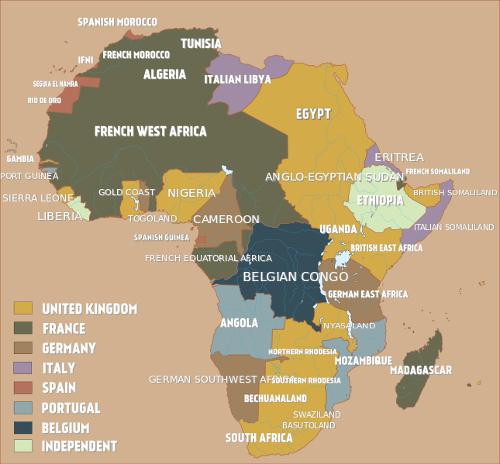 Colonial AfricaPhoto: Whiplashoo21 CC 4.0 International no changes made
Colonial AfricaPhoto: Whiplashoo21 CC 4.0 International no changes made
From 1880 to 1900, Africa was almost completely occupied by the European superpowers and divided during negotiations, the "scramble for Africa". Great Britain focused on the South Africa-Egypt axis and France on Northwest and West Africa. A combination of factors caused this sudden attention to the African continent. Great Britain's crumbling world supremacy was important. They faced increasing competition from traditional opposites such as France and Germany, but also from the upcoming gigantic trade power United States.
Furthermore, there were many raw materials available in Africa that the industrial superpowers in Europe desperately needed. The gold and diamonds found in southern Africa also created a great attraction. Tropical diseases were better controlled, including malaria through the discovery of quinine. And the fact that the French colonized the Sahel and the western part of the Sahara was also simply because they were afraid that the British would get ahead of them. The French had been present in West Africa since 1658 through a trading post on an island in the mouth of the Senegal River. Due to the slave trade and tribal wars, the French territory expanded inland along the shores of the Senegal.
At the time, Dakar was the main city on the west coast of Africa. Under Governor Louis Faidherbe, interests in West Africa increased from 1854 onwards. Under his rule, the first fort on Malian territory was built in 1855 near Kayes on the Senegal: fort Médine.
In 1876 Brière de l'Isle became governor of Senegal. He wanted to build a railway between Dakar and the Niger River, in order to bring trade from the western Sahel to Senegal. In 1880, the French made a treaty with Tukulor leader Ahmadu Seku and in return they were granted trade rights. However, the French ignored the treaty and in 1883, under the leadership of Colonel Borgnis-Desbordes, took the then still insignificant Bamako and built a fort there.
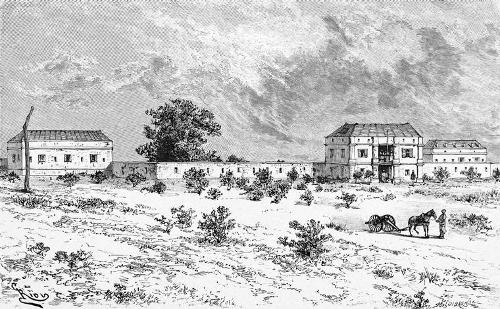 Mali, French fort Bamako from 1883Photo :Edouard Riou in the public domain
Mali, French fort Bamako from 1883Photo :Edouard Riou in the public domain
Ultimately, Bamako would become the capital of the state of Mali. In 1890, Ségou, the Tukulor capital, was conquered, but three years later the Tukulor were finally defeated. The next opponents of the French were the Mandinka and the Tuareg. In 1889 the Mandinka stronghold of Sikasso was taken and in 1894 the Tuareg city of Timbuktu was taken. The southwestern part of the Sahara was controlled by the famous camel riders of the French army, the Méharistes. After this, the track between Dakar and the Niger River was constructed and fully commissioned in 1904. In 1908, the administration of the French colony of Haute-Sénégal et Niger was installed in Bamako.
In 1920, French administration was again reorganized and divided into two large colonies: French Equatorial Africa, administered from Brazzaville, and French West Africa, administered from Dakar. French West Africa consisted of eight sub-colonies, of which Mali, then still called Soudan, was one. The borders that Soudan then got are still the borders of the current state of Mali. The local peoples were thus divided over three colonies. Economically, however, there was not much more to be obtained for France, even if, for example, they tried to revive cotton cultivation. Due to poor soil, salinization and reluctant local population, this project (Office du Niger) failed. As a result, France more or less abandoned Soudan, with the result that many Malians went to the coast to find work on the plantations or to countries such as Senegal and Ivory Coast.
Mali independant
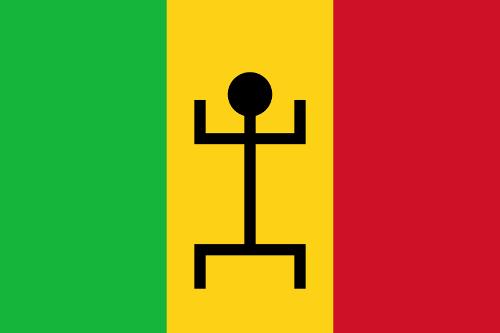 Flag of the Mali Federation 1858-1961Photo: Public domain
Flag of the Mali Federation 1858-1961Photo: Public domain
After the Second World War, independence movements sprang up all over the African continent, including Soudan. One powerful party emerged, the Union Soudanaise / Rassemblement Démocratique Africain, headed by Modibo Keïta, who became head of the Soudanese government in 1956. Soudan was then given limited autonomy. In 1958, further autonomy followed under the umbrella of the French Commonwealth, the Communauté Française. Various West African countries then wanted to form a federation. However, this collaboration barely got off the ground. Countries such as Ivory Coast, Upper Volta (now Burkina Faso) and Dahomey (now Benin) soon withdrew. Soudan and Senegal remained, which formed the Mali Federation in 1959, named after the 13th and 14th century empire. This alliance, too, did not last long because the ideas of leaders Leopold Senghor and Modibu Keita diverged too far. Senghor wanted to maintain close ties with France while Keita wanted to be completely independent. Senegal then left the federation and Soudan became the independent state of Mali (First Republic) on September 22, 1960. All this happened without bloodshed, unlike the wars of independence in, for example, North Africa. The little importance that France has in this region was thus clear. As an economic model, Keita chose a socialist plan economy with an emphasis on state-owned companies. In 1962, Mali left the monetary union of the CFA franc with major consequences. The own Malian franc was very much subject to inflation, which left Mali in financial isolation. There was also no train traffic between Senegal and Mali for three years. All these circumstances drove Mali into the hands of the Soviet Union, also because the West saw little in the economic and political course of Keita. However, everything failed and politics also went badly. The ruling US / RDA basically ran Mali as a one-party state and not everyone was happy about that. In 1963, an uprising broke out among the Tuareg of Eastern Mali. They wanted their own state, Azaouad, together with the Tuareg of Niger and Algeria. The revolt was crushed by the Malian army.
Coups and ultimately democracy
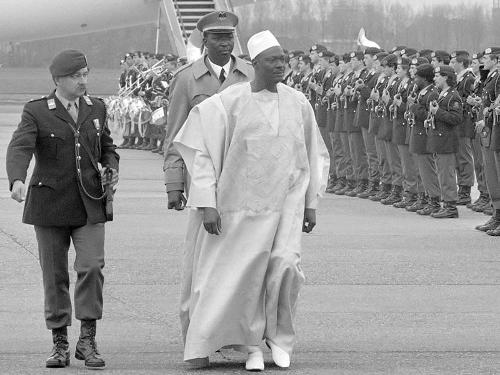 Moussa Traoré, MaliPhoto: Bogaerts, Rob / Anefo CC 3.0 Netherlands no changes made
Moussa Traoré, MaliPhoto: Bogaerts, Rob / Anefo CC 3.0 Netherlands no changes made
On November 19, 1968, an army coup d'état (Military Committee of National Liberation) led by the young lieutenant Moussa Traoré. From that time on, Mali was governed by the Comité Militaire du Libération Nationale. Although ties with France were restored, the economy continued to suffer, especially after the disastrous drought that hit the Sahel in the early 1970s. In fact, Mali was now totally dependent on foreign aid. In 1974 Traoré made Mali a one-party state again under the leadership of the Union Démocratique du Peuple Malien (Second Republic). The UDPM was founded in 1979 and the civil administration returned. Besides the UDPM, political parties were prohibited. Traoré was elected president. He united the offices of president and head of government and conducted authoritarian rule during the 1980s and under this dictatorship corruption was rampant.
In 1974 Mali rejoined the monetary union of the CFA franc, but so far little or nothing changed politically and economically. In 1990 and 1991 various riots broke out again in Northern Mali, again due to the Tuareg (Azawad uprising) and a student riot in Bamako that were bloodily crushed with more than a hundred deaths as a sad result. Led by Lieutenant Colonel Amadou Toumani Touré, the military staged another coup in March 1991. A new constitution was drafted and a parliamentary democracy established. The Third Republic was born.
This was followed in 1992 under interim president Touré, which were won by a large majority by the Alliance pour la Démocratie au Mali (ADEMA).
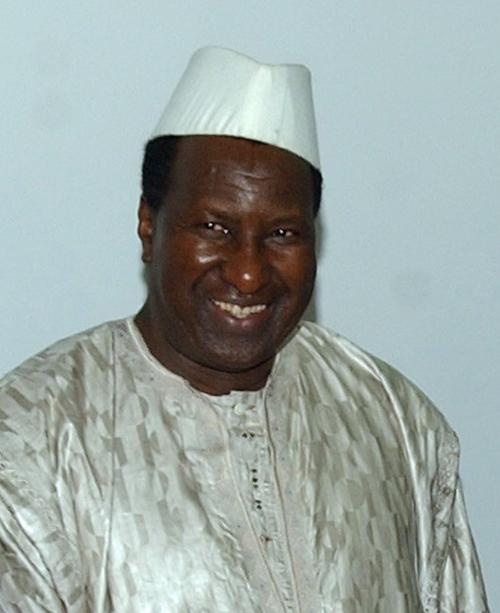 Alpha Oumar Konaré, MaliPhoto: Antonio Cruz/ABr CCn 3.0 Brazil no changes made
Alpha Oumar Konaré, MaliPhoto: Antonio Cruz/ABr CCn 3.0 Brazil no changes made
ADEMA's foreman, Alpha Oumar Konaré became president, but faced the almost impossible task of saving the poverty-stricken country from destruction. The infant mortality rate was the highest in the world, life expectancy was below 50 years and 75% of the population was illiterate. Due to the transition to a democratic system, Mali did receive a lot of help from donor countries that made large investments in infrastructure, among other things. Mali also switched to a partial market economy so that it became more attractive for foreigners to invest in Mali. At the moment, economic growth is above the African average. For 'first degree murder' in riots in March 1991, ex-president Traoré and three others were sentenced to death on February 12, 1993. This death sentence was upheld on appeal in January 1999, but commuted to life in September.
The Tuareg are still a problem. In 1990, a kind of civil war broke out between the Tuareg and the Malian army. The Tuareg had lost almost all their livestock to the drought, the caravan trade was little more and the promised aid was not forthcoming. The desire for a state of its own still played a role. In 1992, Konaré made an agreement with the rebels that was ignored by a group, and attacks on civilian targets soon followed, which were answered in a bloody way by the Peul and the Songhai. In June 1995, the Arab-Islamic Front (FIAA) of Azaouad, the only remaining Tuareg group to engage in armed resistance, announced a unilateral ceasefire. In early 1996 the peace process between the government and the Tuareg rebels was completed. The Tuareg uprising has claimed the lives of at least 50,000 people since 1990.
Parliament elections were held twice more under Konaré. The first, in April 1997, was canceled by the Constitutional Court and the second, in July 1997, was boycotted by the opposition. The support of the opposition party Mouvement Patriotique pour le Renouveau (MPR) led by Choguel Maïga increased. This party is a continuation of that of former dictator Moussa Traoré. President Konaré announced in November 1999 that he would not run for the third time in the 2002 presidential election.
21st century
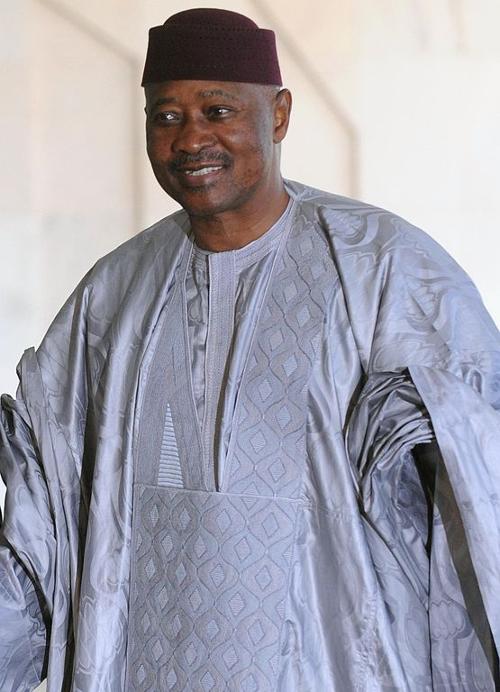 Amadou Touré , MaliPhoto: Antonio Cruz/ABr CC 2.5 Brazil no changes made
Amadou Touré , MaliPhoto: Antonio Cruz/ABr CC 2.5 Brazil no changes made
In 2002 the former Malian dictator Moussa Traoré was granted amnesty by President Konaré. Konaré said in a statement that Traoré and his wife Mariam would be released for humanitarian reasons.
Both presidential and parliamentary elections will take place in 2007, in April and July 2007 respectively. Touré is expected to win them. His main challengers will be Ibrahim Boubacar Keita (Rassemblement pour le Mali (RPM) and a candidate of the Alliance pour la democracy au Mali (Adema). Key themes in Touré's election campaign will be to regain the confidence of the population in his poverty reduction policy, removing the unrest among students, privatization and agricultural prices In April 2007 Touré wins the presidential election and in July 2007 his party also wins the parliamentary elections In May 2008 there are riots with Tuareg fighters, in February 2009 the army declares most Tuareg base camps Due to security risks, the annual music festival will be held in a different location in January 2010. Army officers deposed Touré in March 2012 for being unable to deal with the rebels.In April 2012, the Tuareg conquer Northern Mali and declare independence The military hand over power back to a civilian government ge lead by Dioncounda Traore. It remains very restless throughout the year. The Tuaregs are supported by Islamic extremists.
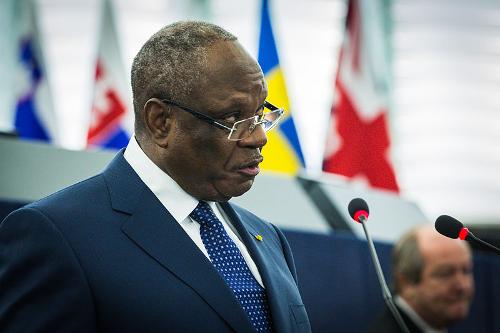 Ibrahim Boubacar Keita, MaliPhoto: Claude TRUONG-NGOC CC 3.0 Unported no changes made
Ibrahim Boubacar Keita, MaliPhoto: Claude TRUONG-NGOC CC 3.0 Unported no changes made
In January 2013, France intervenes in Mali at the request of President Traore. The French troops recapture Gao and Timbuktu. In June, a treaty will be concluded with the Tuaregs. In August 2013, Ibrahim Boubacar Keita wins the presidential election. In the parliamentary elections in December 2013, supporters of the president won the most seats. In 2014 the UN will send a peacekeeping force to Mali. In April 2014, President Keita appointed his former rival Moussa Mara prime minister. In May 2014, after a fragile file, fighting broke out again with fights with Tuaregs. In 2015 and 2016 there has been a lot of unrest and there have been many attacks by Islamists, including that of November 2015 on the luxurious Radison hotel in Bamako. In August 2016, more than a hundred UN soldiers have been killed since the start of the mission, including Dutch people. In April 2017, President Keita appointed a new government with his ally Bdoulaye Idrissa Maiga as prime minister. President Keita will be re-elected in July 2018. Jihadist violence continues to ravage the north and east of the country. In August 2020 there will be a military coup, after months of protests by the population, and Keita has to leave the field. In September 2020, former army officer Bah Ndaw will form a transitional government.
Sources
Te gast in Mali
Verre Reizen
Velton, R. / Mali
Bradt
Vlugt, B. / Mali
Gottmer
Westen, G. van / Mali : mensen, politiek, economie, cultuur
Koninklijk Instituut voor de Tropen
CIA - World Factbook
BBC - Country Profiles
Copyright: Team The World of Info